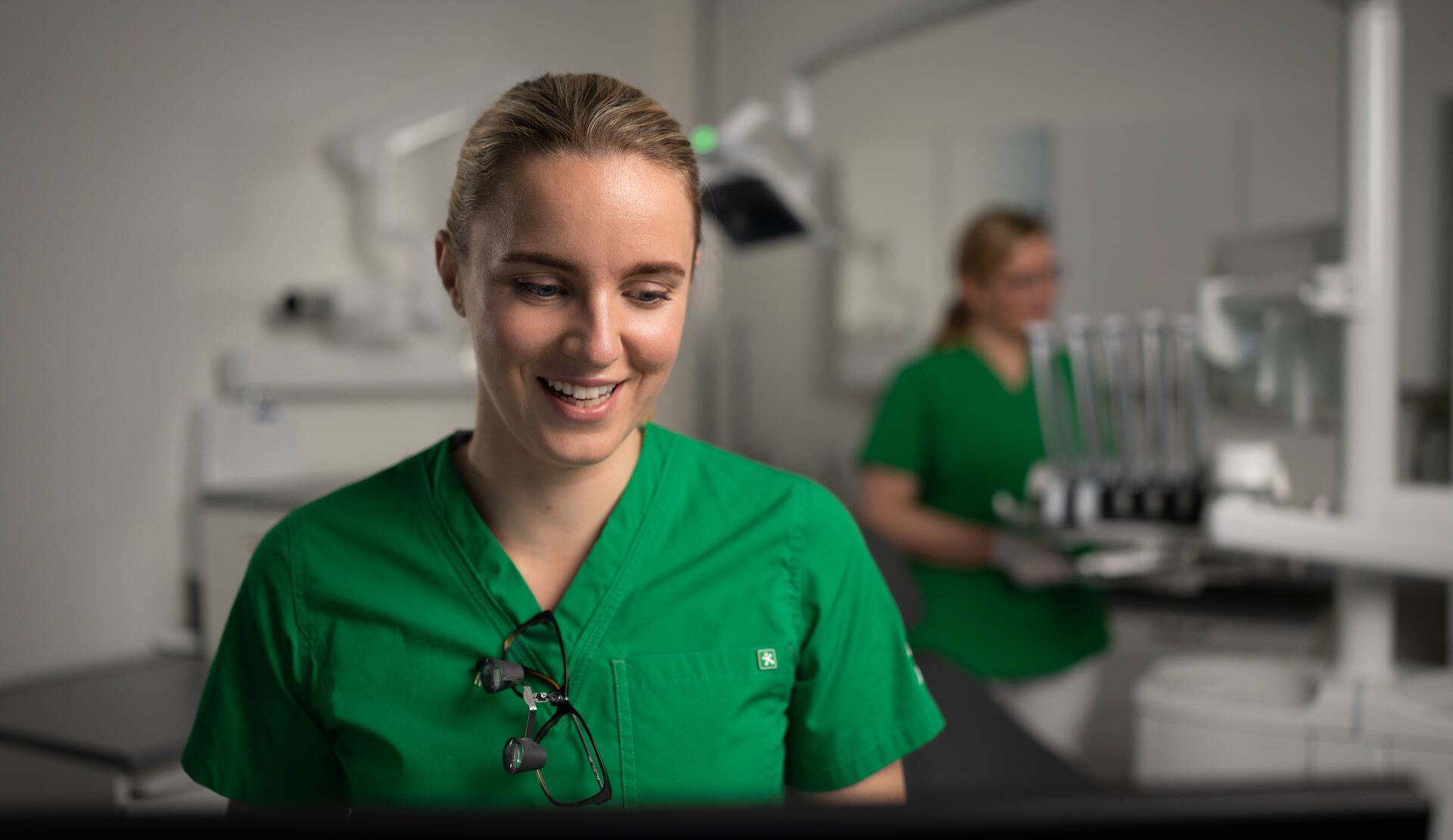
Breast reduction surgery, also known as reduction mammoplasty
Specialist in the article

Revised 5/30/2025
Breast reduction surgery in brief
- Breast reduction surgery may be necessary if the breasts are too large, cause chronic pain, limit physical activity, or create discomfort.
- The surgery is performed under general anesthesia, usually as a day surgery.
- The first step is a consultation with a plastic surgeon to discuss aesthetic goals and assess overall health. The surgeon examines the breasts and may recommend a mammogram before the surgery.
What is breast reduction surgery?
Breast reduction surgery, or reduction mammoplasty, is a procedure where excess breast tissue and skin are removed surgically. The surgery can be performed using various techniques, depending on individual characteristics, physical needs, and aesthetic goals.
Reduction surgery often alleviates neck and shoulder pain caused by large breasts. It can also provide better opportunities for physical activity and clothing choices. Breast reduction is often perceived as significantly improving quality of life.
Who is breast reduction surgery suitable for?
Breast reduction surgery is suitable for women of all ages whose breast development is complete, typically at least 18 years old. Pregnancy and breastfeeding can affect the results of breast reduction surgery, so many choose to postpone the procedure until they are no longer planning to have children.
A woman with large breasts is not necessarily overweight; glandular tissue can grow large even in slender individuals. Even small reductions in large breasts can shift the center of gravity and significantly reduce shoulder pain.
Breast reduction may be beneficial in the following cases:
- Breasts are too large and create a disproportionate body shape.
- Chronic neck, back, or shoulder pain caused by the weight of the breasts.
- Heavy and sagging breasts.
- Deep indentations from bra straps.
- Skin irritation or rashes under the breasts.
- Large breasts limit physical activity and exercise.
- Large breasts cause discomfort or insecurity.
- Breasts are asymmetrical in size.
Preparing for breast reduction surgery
- Consultation. The first step in breast reduction is a consultation with a plastic surgeon. During the appointment, aesthetic goals and any concerns about the procedure are discussed.
- Health assessment. The plastic surgeon also evaluates overall health. The consultation includes a review of past and current medical conditions, medications, supplements, herbal products, and previous surgeries.
- Physical examination. During the consultation, the plastic surgeon examines the breasts, assessing their size, shape, skin elasticity, and the position of the areolas. The doctor may also take photographs, which will be visible in OmaMehiläinen. A mammogram may be recommended before the surgery.
- Treatment options. The consultation also covers the suitable surgical technique, risks involved, and necessary tests. The doctor provides an estimate of the expected changes.
- Instructions to take home. Following the plastic surgeon's instructions is crucial to ensure the best possible outcome. The instructions include information about support bras, activity restrictions, wound care, and follow-up appointments. Smoking should be avoided for at least four weeks before and after the surgery.
- Clothing. On the day of the surgery, wear loose and comfortable clothing. The day after the surgery, appropriate-sized bras are selected. Support aids healing and prevents fluid accumulation.
- Support. Ensure you have help for getting home and assistance with dressing, household chores, and shopping during recovery.
How breast reduction surgery proceeds
Breast reduction surgery involves removing excess breast tissue and skin. The procedure may also include liposuction in the armpit area if there is a significant amount of fatty tissue.
Scars from the surgery are located around the areola and the lower part of the breast and will fade over time.
The surgery is performed under general anesthesia. An anesthesiologist monitors the procedure during and after the surgery.
In the recovery room, the patient’s condition is monitored, and pain medication is administered as needed. The professional staff ensures that post-operative recovery is as smooth and safe as possible.
Breast reduction surgery is usually performed as day surgery, and patients can go home the same day. An adult escort is required for discharge.
Recovery after breast reduction surgery
- Rest. Avoid physical exertion, lifting heavy objects, and sudden arm movements. Light household tasks can be done a few days after the surgery. Walking outdoors is also allowed.
- Hygiene. You can shower normally the day after the surgery. The wounds are usually covered with surgical tape, which can get wet and stay in place until the stitches are removed or for 1–2 weeks.
- Sauna. Sauna use is generally discouraged for at least two weeks after the surgery. The heat can increase swelling and slow down healing, so it’s important to wait until the surgeon gives permission.
- Clothing. Wear compression garments or support bras if recommended by the surgeon, as they help reduce swelling and support the breasts.
- Swelling and bruising. Swelling and bruising usually subside within a few weeks, and the final results begin to appear. Sensation in the nipple and areola typically returns gradually. Compression garments can help reduce swelling and promote healing.
- Scars. The breasts will settle into their natural shape a few months after the surgery. Scars will also fade, lighten, and flatten over time.
- Exercise. Light walking is usually allowed a few days after the surgery and can help improve circulation and reduce swelling. You can return to lighter activities, such as stretching or yoga, when you feel comfortable and the surgeon approves. Avoid heavy exercise, such as running, weightlifting, or intense aerobic activities, for at least 4–6 weeks after the surgery.
- Follow-up. The first post-operative check-up is scheduled 1–2 weeks after the surgery. Subsequent follow-ups are usually at 6 and 12 months, during which the plastic surgeon evaluates the long-term results.
- Medications. The surgeon may prescribe anti-inflammatory medications to manage post-operative pain. These should be used as directed, ensuring they are safe to use with any other prescribed medications. Pain usually subsides within a few days.
- Home care instructions. After the surgery, you will receive comprehensive and clear instructions for home care. Following these instructions is essential to ensure the best possible outcome.
- Sick leave. The length of sick leave depends on the type of work and is typically 2–4 weeks.
The prices presented are indicative. The exact price will be determined after a consultation with the plastic surgeon, once individual needs have been assessed. The decision to proceed with surgery can be made after the consultation.
The final price is influenced by factors such as:
- Value-added tax (VAT): If the surgery is part of medical treatment, such as breast reduction or eyelid correction, no VAT is charged for the procedure. If a similar surgery is performed for aesthetic reasons, VAT will be added to the price.
- Procedure location: The price is affected by whether the surgery is performed in outpatient procedure conditions or as day surgery in a hospital.
At Mehiläinen, you can flexibly use various payment methods, such as paying in installments. Read more about payment methods.
| Service | Price estimate |
|---|---|
| Abdominoplasty also known as tummy tuck, vat 25.5 % The price does not include compression garments, 100–200 €, or overnight monitoring and on-call services, 740–1500 €/night. | from 9 550,00 € No Kela reimbursement |
| Scar revision in the head or neck area, vat 0 % | from 550,00 € No Kela reimbursement |
| Facelift, vat 25.5 % The price does not include compression garments, 100–200 €, or overnight monitoring and on-call services, 740–1500 €/night. | from 13 600,00 € No Kela reimbursement |
| Eyebrow lift, vat 0 % | from 4 100,00 € No Kela reimbursement |
| Eyebrow lift, aesthetic, vat 25.5 % | from 5 150,00 € No Kela reimbursement |
| Rhinoplasty, vat 25.5 % | from 12 900,00 € No Kela reimbursement |
| Removal of a mole or skin lesion, vat 0 % The price does not include potential tissue sample analysis. Tissue sample analysis starts at 122.50 €. | from 470,00 € No Kela reimbursement |
| Removal of a mole or skin lesion with a laser in the head or neck area, vat 0 % The price does not include potential tissue sample analysis. Tissue sample analysis starts at 122.50 €. | from 430,00 € No Kela reimbursement |
| Forehead lift, open or endoscopic, vat 25.5 % The price does not include compression garments. Compression garment prices are 100–200 €. | from 7 300,00 € No Kela reimbursement |
| Liposuction from a small area (e.g., under the chin, vat 25.5 % The price does not include compression garments. Compression garment prices are 100–200 €. | from 2 900,00 € No Kela reimbursement |
| Liposuction from a larger area, e.g., abdomen and flanks, vat 25.5 % The price does not include compression garments. Compression garment prices are 100–200 €. | from 8 150,00 € No Kela reimbursement |
| Removal of breast implants from both breasts, vat 25.5 % | from 4 600,00 € No Kela reimbursement |
| Breast lift surgery for both breasts, vat 25.5 % The price does not include compression garments. Compression garment prices are 100–200 €. | from 9 600,00 € No Kela reimbursement |
| Breast reduction surgery for both breasts, vat 0 % The price does not include compression garments. Compression garment prices are 100–200 €. | from 8 800,00 € No Kela reimbursement |
| Breast reduction surgery (aesthetic) for both breasts, vat 25.5 % The price does not include compression garments. Compression garment prices are 100–200 €. | from 11 000,00 € No Kela reimbursement |
| Breast augmentation with implants, vat 25.5 % The price does not include implants or support bras. Implant prices are 580–1100 €/pair. Compression garment prices are 100–200 €. | from 5 800,00 € No Kela reimbursement |
| Upper eyelid surgery for both eyes, vat 0 % | from 2 050,00 € No Kela reimbursement |
| Upper eyelid surgery (aesthetic) for both eyes, vat 25.5 % | from 2 600,00 € No Kela reimbursement |
Other related services
Body and breasts
Comprehensive and expert plastic surgery for the body and breasts.
Consultation with a plastic surgery nurse
A free consultation helps you find the right treatment options.
Face and eyelids
We provide personalized solutions for the aesthetic needs of your face and eyelids.
Nose and ears
Enhance the shape and structure of your nose or ears with the expertise of a plastic surgeon.
Plastic surgeon
A specialist in plastic surgery performs treatments and surgeries to enhance the appearance and functionality of the face and body.
Skin lesions and moles
Treat skin lesions and remove moles safely and discreetly.
Rintaleikkaukset Virossa
Mehiläisen tytäryhtiöt Virossa tarjoavat rintojen leikkauksia myös suomalaisille asiakkaille.

Frequently asked questions about breast reduction surgery
Breast reduction surgery involves removing excess fat and tissue from the breasts, reshaping them, and repositioning the nipple. The goal is to achieve a breast size and shape proportionate to the body, reduce physical discomfort, and improve appearance.
Breast reduction surgery can alleviate back, neck, and shoulder pain caused by the weight of the breasts. It can improve posture and make physical activity easier, leading to better physical fitness and quality of life. Additionally, the surgery can boost self-esteem and make clothing choices easier when the breast size is more balanced with the body.
Breast reduction surgery is not suitable for everyone, as it depends on the individual’s health, breast size, and other factors. For example, smoking, excessive weight, or chronic illnesses can affect the safety and outcomes of the surgery. A consultation with a plastic surgeon is essential to assess suitability and potential risks.
Recovery from breast reduction surgery typically takes 4–6 weeks, but individual differences are possible. The first few days require special care, and heavy physical activity should be avoided. Swelling, bruising, and pain subside over time. Complete healing and seeing the final results may take several months.
The results of breast reduction surgery are generally permanent, but aging, weight fluctuations, and hormonal changes can affect the size and shape of the breasts over time.
The exact cost of breast reduction surgery depends on the extent of the procedure and the area being treated. The price usually includes the initial consultation, the procedure itself, necessary hospital care, and follow-up appointments. A precise cost estimate is provided during the plastic surgeon’s consultation when the scope and details of the procedure are clarified. Explore Mehiläinen’s flexible payment options as well.


